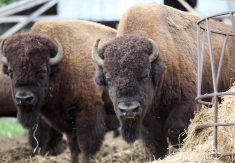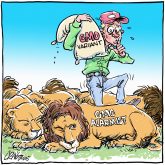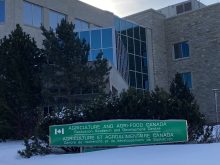I HAVE been lucky this summer. In the space of a couple of weeks, I have:
- seen eagles soar
- heard the cry of a loon
- been rocked to sleep by the sound of the waves beating against the shore of a northern lake
- walked in the footsteps of pioneers at Cannington Manor
- watched deer graze at Kenosee Lake
- gazed at the hoodoos of Roche Percee
- stood in the silence of the badlands of southern Saskatchewan.
Read Also

High prices see cow-calf producers rushing to incorporate
Farm accountants are reporting a steady stream of cow-calf producers rushing to get their operations incorporated ahead of selling their calves this fall.
When I was named president of the Saskatchewan Weekly Newspapers Association in September 1998, I promised to visit our member-publishers across the province.
As my term draws to a close, I still have a few more publishers to visit.
I can only hope that the tour, and the information gleaned from it, will benefit my association half as much as it has me.
Al Jolson used to sing about how fine it was to be in Carolina in the summer. Well, Saskatchewan in the summer is a pretty fine place too.
This province will host the 2001 convention of the Canadian Community Newspapers Association and at the recent CCNA convention in Magog, Que., the Saskatchewan delegation showed a video touting the pleasures of our province.
The video was well-received because it portrayed the province as being more than elevators and wheat fields.
Not that those aren’t important — in my part of the world they’re very important — but there is more to our province and we have habitually sold ourselves short.
Traveling Saskatchewan on my president’s tour, I have been amazed by our diversity. And the color! At one time, Saskatchewan was basically green in the summer, gold in late summer and autumn as harvest neared.
The green and gold are still there, but with crop diversification it has become a riot of color in our fields.
Twenty-five years ago, when I moved to Saskatchewan, tourism was practically unknown. Today, it is big business.
And we are great ones for marking our communities with giant symbols. By the end of my tour next month, I will probably have one of the province’s largest collections of photos of these symbols: the gopher at Eston, the Mountie at Redvers, the Ukrainian lady at Canora, the bee at Tisdale, the miner at Estevan, the dinosaur at Ponteix.
They mark our communities with symbols of our history and of our industry. They mark our place and our passing.
If you’re looking for a place to go this fall, I suggest you see Saskatchewan first.














